Located near the bustling city of Jaipur, Jamwa Ramgarh Wildlife Sanctuary offers an exceptional experience for nature lovers and wildlife enthusiasts. Nestled amidst the Aravalli Hills, this sanctuary spans approximately 300 square kilometres and is known for its scenic landscapes, rich biodiversity, and calm environment. The sanctuary is home to various species, including leopards, deer, wild boars, and numerous bird species. With the picturesque Jamwa Ramgarh Lake as its centrepiece, the sanctuary also attracts migratory birds, adding to its appeal for bird watchers.
Jamwa Ramgarh Wildlife Sanctuary Location
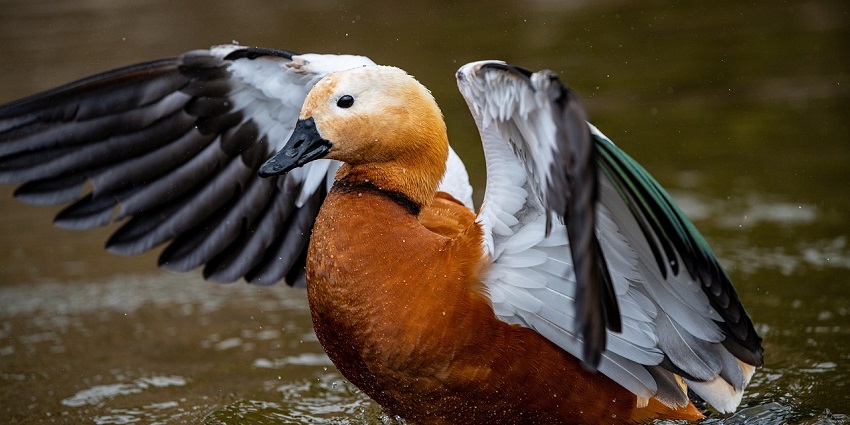
Photo: MassoudHosnaRokh / Pixabay / Image For Representation Only
Ramgarh Wildlife Sanctuary is located around 35 kilometres from Jaipur, Rajasthan. The sanctuary is easily accessible by road, and the route offers stunning views of the Aravalli Hills, making the journey enjoyable for visitors. The sanctuary address is well-marked, and visitors can also use GPS services to navigate easily to the sanctuary.
Suggested Read: Top Wildlife Sanctuaries In Rajasthan For A Wild Adventure
How To Reach Jamwa Ramgarh Wildlife Sanctuary
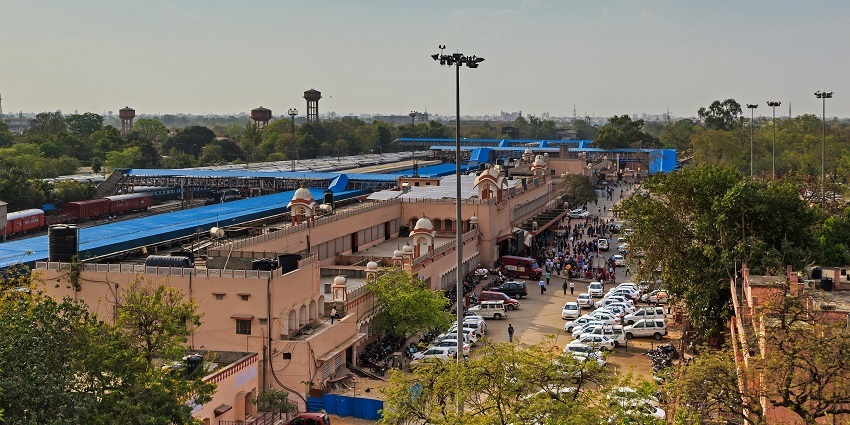
Photo: A.Savin / Wikimedia Commons
By Road: The sanctuary is located approximately 35 kilometres from Jaipur, and visitors can reach it by car, taxi, or local bus. The journey takes about an hour from the city.
By Rail: Jaipur Railway Station is the nearest major station, located about 40 kilometres away. From here, you can hire a taxi or use public transportation.
By Air: The closest airport is Jaipur International Airport, situated around 45 kilometres from the sanctuary. Visitors can reach the sanctuary by taxi or bus from the airport.
Places To Visit In And Around Jamwa Ramgarh Wildlife Sanctuary
Visit these mesmerising places in and around the verdant Jamwa Ramgarh Wildlife Sanctuary for a complete travel experience.
1. Jamwa Ramgarh Lake

Photo: fietzfotos / Pixabay / Image For Representation Only
Jamwa Ramgarh Lake is the sanctuary’s heart, attracting both wildlife and visitors. This reservoir, which was created by humans, was once a significant supply of water for Jaipur; however, it is now mostly used as a hub for migratory birds. The lake is a popular destination for bird watchers who want to take captivating photographs of a variety of birds, including flamingos, pelicans, and ducks of varying sorts. It is a wonderful location for photography and leisure due to the peaceful environments that surround it.
Timings: 6 AM – 6 PM
Entry Fees: N/A
Suggested Read: Famous Lakes In Rajasthan
2. Nahargarh Biological Park
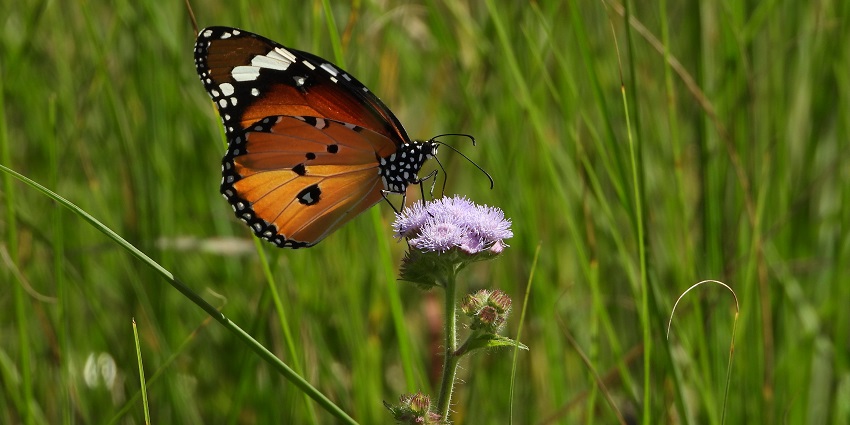
Photo: Gautamswati / Wikimedia Commons
Located just 20 kilometres from the sanctuary, Nahargarh Biological Park is a popular spot for those looking to explore more wildlife in the region. Tigers, lions, leopards, and birds that are not typically seen in the park are just some of the species that have the potential to be found there. The park is home to a diverse range of animals that can be found there. For anyone who has an interest in wildlife, the park is a wonderful location because it is meant to provide natural habitats for the animals.
Entry Fees: ₹50 for Indian citizens, ₹300 for foreign tourists
Timing: 8:30 AM – 5:30 PM
3. Amer Fort
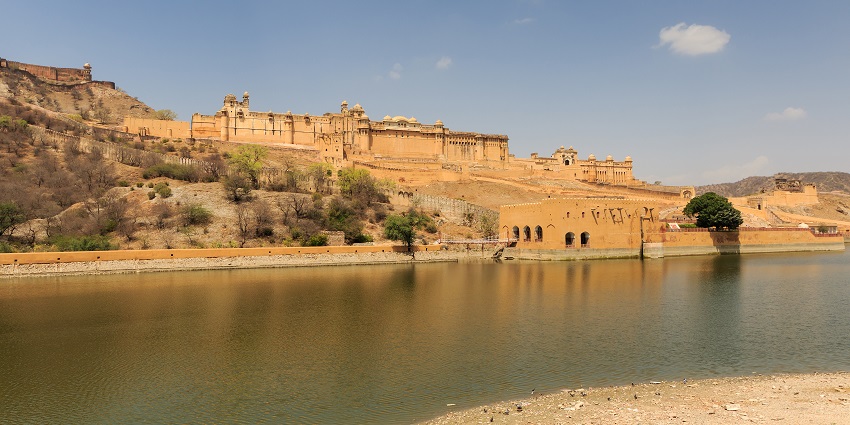
Photo: A.Savin / Wikimedia Commons / Image For Representation Only
Tigers, lions, leopards, and birds that are not typically seen in the park are just some of the species that have the potential to be found there. The park is home to a diverse range of animals that can be found there. For anyone who has an interest in wildlife, the park is a wonderful location because it is meant to provide natural habitats for the animals. This makes the park an excellent area for anyone who has such an interest.
Timings: 7 AM – 8 PM
Entry Fees: ₹100 for Indian citizens, ₹500 for foreign tourists
Suggested Read: Amber Fort Elephant Ride
4. Jhalana Leopard Safari Park
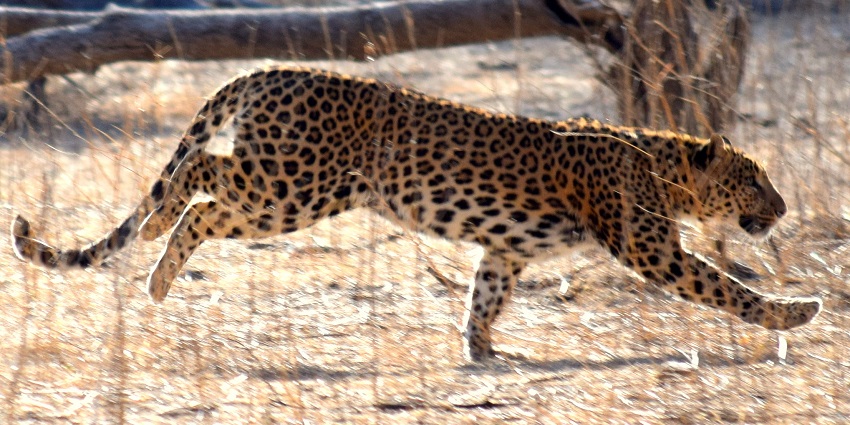
Photo: Rohit Gangwal / Wikimedia Commons / Image For Representation Only
Located about 40 kilometres from the sanctuary, Jhalana Leopard Safari Park is one of the best places to spot leopards in their natural habitat. The park provides tourists with the opportunity to witness these secretive creatures, in addition to other types of wildlife such as hyenas, jackals, and a variety of bird species, through the use of guided safari drives. For those who are interested in wildlife and want to get a thrill of excitement while tracking down a wild leopard, Jhalana is an absolute must-see destination.
Timings: 9 AM – 6 PM
Entry Fee: ₹500 per person
5. Jaigarh Fort
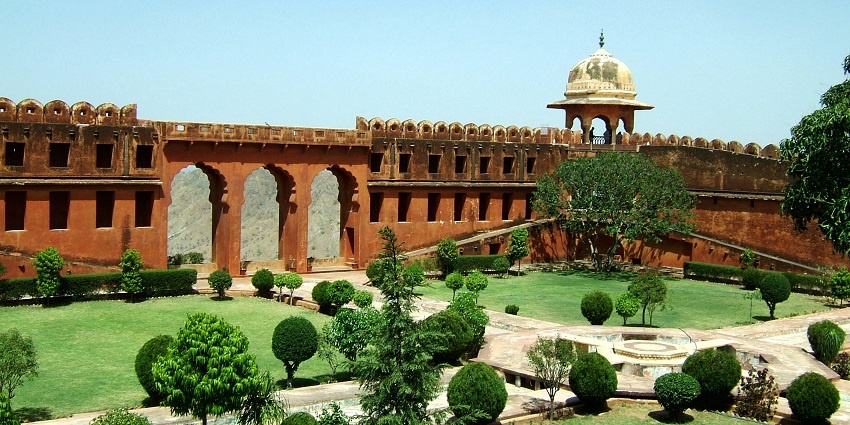
Photo: Acred99 / Wikimedia Commons
Additional historical sites can be found in close proximity to the sanctuary, including Jaigarh Fort. The Aravalli hills and Amer Fort may be seen from this enormous fort, which was constructed in the early 18th century and offers breathtaking views. For those interested in history, the fort is an absolute must-see because it is home to Jaivana, the largest cannon on wheels in the world. The design and architecture of the fort offer interesting insights into the history of the military in Rajasthan.
Entry Fees: ₹70 for Indian citizens, ₹150 for foreign tourists
Timings: 9 AM – 4:30 PM
Suggested Read: Explore The Historic Jaigarh Fort Cannon
6. Nahargarh Fort

Photo: Jakub Halun / Wikimedia Commons
Nahargarh Fort, perched on the Aravalli ridge near Jamwa Ramgarh Wildlife Sanctuary, is one of the most striking historic sites to include when exploring the sanctuary’s surroundings. Originally built in the eighteenth century as Jaipur’s defensive stronghold, its sandstone ramparts hug the contours of the hills and offer sweeping views of the pink city and the forested valleys below. Visitors wander through ruined bastions and pause at the small shrine of Nahar Singh, the spirit prince whose legend gave the fort its name. As day draws in, fading light transforms the landscape into a tapestry of warm hues.
Timings: 10 AM – 10 PM
Entry Fee: ₹50 for Indian tourists, ₹200 for foreign tourists
7. Sisodia Rani Garden

Photo: Slyronit / Wikimedia Commons
Sisodia Rani Garden, a short drive from Jamwa Ramgarh Wildlife Sanctuary, is a serene Mughal retreat created as a royal gift in 1728. The terraced lawns cascade down three levels towards a glistening fountain, with flowering flowerbeds, ornate pavilions and colonnaded galleries arranged in the Charbagh style that symbolises paradise on Earth. Frescoes recount scenes from Krishna’s life, and peacocks roam beneath the shade of frangipani trees. Meandering pathways invite leisurely strolls while the gentle melody of flowing water calms the mind. This hidden oasis offers a tranquil escape into history and horticultural artistry.
Timings: 8 AM – 5 PM
Entry Fee: ₹50 for Indian tourists, ₹200 for foreign tourists
Suggested Read: National Parks In Rajasthan
8. Jamwai Mata Temple
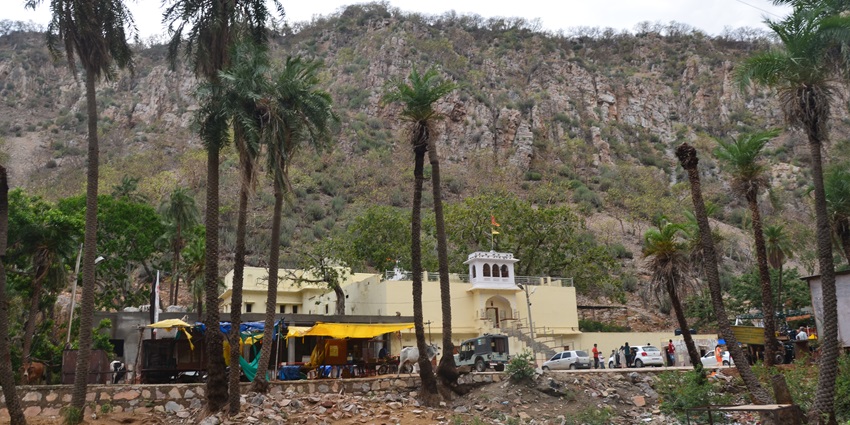
Photo: Siddharth tiwari / Wikimedia Commons
Jamwai Mata Temple, nestled on the shores of Ramgarh Lake near Jamwa Ramgarh Wildlife Sanctuary, honours the local Goddess worshipped by the Kachwaha clan. Built by King Rao Dulherai centuries ago, its red sandstone walls enclose a simple shrine where devotees offer marigold garlands and coconut offerings. Legend tells of a divine vision that guided Dulherai to conquer these lands, and the goddess named both the temple and the town in honour of them. Pilgrims gather in the courtyard as temple bells chime and then stroll along the lake’s edge, enjoying the peaceful setting and soft birdcalls.
Timings: 6:30 AM – 8 PM
Entry Fee: Free
Where To Stay

Photo: Nik Lanús / Unsplash / Image For Representation Only
There are various accommodation options near the sanctuary to suit all budgets. Choose from comfortable guesthouses, hotels, and resorts. Popular choices include Hotel Ramgarh Fresco, Rambagh Palace, and Rajvilas Oberoi. Each offers comfortable rooms, local cuisine, and breathtaking views of the Aravalli Hills.
Suggested Read: Offbeat Places In Rajasthan
Where To Eat
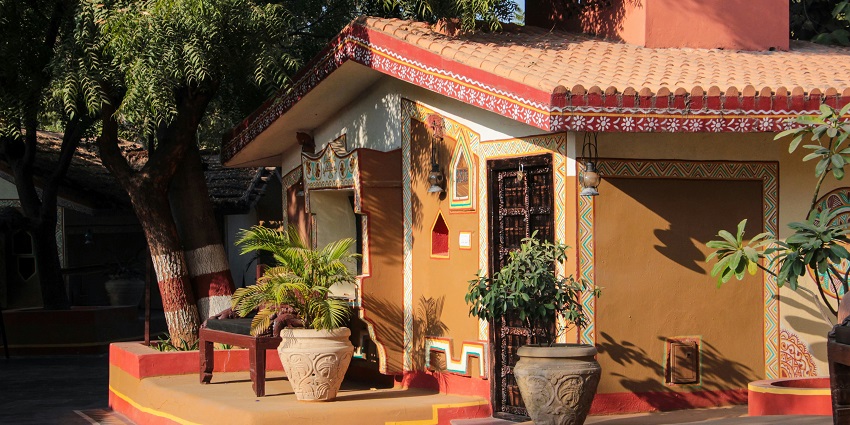
Photo: Milin John / Unsplash / Image For Representation Only
Dining options near the sanctuary include local eateries and restaurants offering authentic Rajasthani cuisine. Sharma Dhaba, Chokhi Dhani, and LMB Hotel are popular choices. Each of these venues provides a cosy setting and a variety of traditional dishes to satisfy your appetite after a day of exploration.
Best Time To Visit
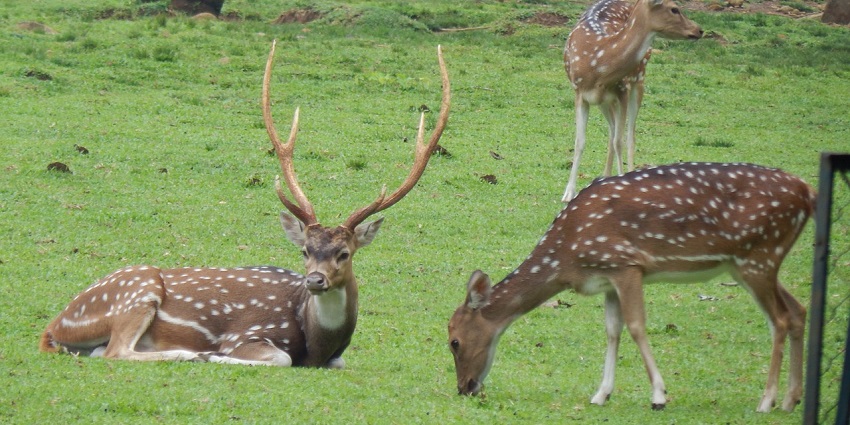
Photo: sendywulandh / Pixabay / Image For Representation Only
If you want to visit the sanctuary, the best time to go is between the months of October and March. This is because the weather is pleasant at this time of year, and there is a higher chance of spotting animals.
Suggested Read: Places To Visit Near Rajasthan For A Memorable Vacation Experience
Other Factors To Consider
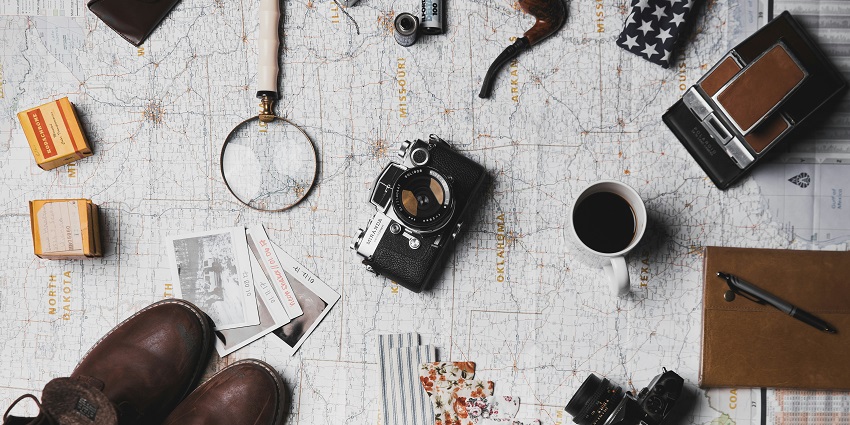
Photo: RobbieRoss / ian dooley / Image For Representation Only
Average Cost Of The Trip
Average trip cost to the sanctuary can range between ₹2,000 to ₹4,000 per person per day, depending on accommodation and activities.
Tips For Travellers
- Wear Comfortable Shoes: Use trekking shoes for uneven terrain and comfort.
- Stay Hydrated: Bring ample water to stay refreshed, especially in the heat.
- Respect Wildlife: Observe animals from a distance and follow sanctuary rules.
- Carry Cash: Some places may not accept cards, so bring cash.
- Pack Accordingly: Dress for hot summers and cool winters.
- Check For Permits: Obtain necessary permits for restricted areas.
- Bring A Camera: Capture the stunning landscapes and wildlife photos at the sanctuary.
Jamwa Ramgarh Wildlife Sanctuary in Vishanpura, Rajasthan is a captivating destination, blending stunning landscapes with diverse wildlife. Perfect for nature enthusiasts and history lovers alike, it offers unique experiences and tranquil retreats. Explore the rich biodiversity and nearby historical sites for a memorable adventure. Don’t wait—plan a trip with TripXL today and immerse yourself in the natural beauty of Jamwa Ramgarh!
Cover Photo: Ryan Jubber / Unsplash / Image For Representation Only


 WhatsApp
WhatsApp
 Twitter
Twitter









